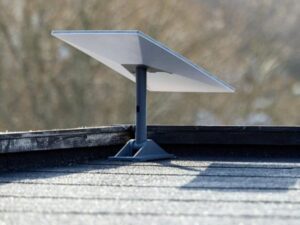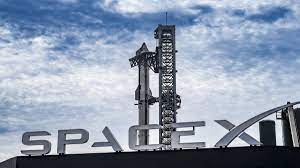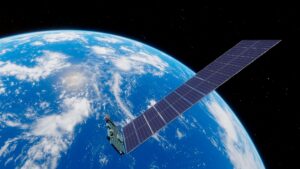
Estonia has decided to allocate €3.5 million to Ukraine for the purchase of Starlink satellite communication systems as part of an IT coalition jointly led by Estonia and Luxembourg. This was reported on the official website of the Estonian Ministry of Defense.
As noted by Estonian Defense Minister Hanno Pevkur, the funds are intended to strengthen Ukraine’s IT capabilities and increase the effectiveness of the Armed Forces on the battlefield.
“Ukraine has confirmed to us that it needs support to secure Starlink connectivity, and it is clear that this is extremely important assistance for them, which has a noticeable effect on the battlefield. Starlink’s capabilities are particularly critical given Ukraine’s desire to significantly increase the number of drone units that require high-performance internet connectivity,” Pevkur said.
He stressed that Ukraine is fighting every day for the freedom of all of Europe, including Estonia.
“Therefore, in addition to weapons, information and technological support is also critically important. I am glad that we can help Ukraine strengthen its IT capabilities, thereby increasing its chances of winning a war that claims hundreds of lives every day,” the minister added.
The €3.5 million in funding comes from Estonia’s aid package to Ukraine planned for 2025. The funds will be transferred to Ukraine through an IT coalition established by Estonia and Luxembourg and will be used for the joint purchase of Starlink systems.

During a meeting with Estonian Defense Minister Hanno Pevkur on the sidelines of the JEF, Ukrainian Defense Minister Denys Shmyhal expressed his gratitude for the offer to allocate €3 million for the purchase and support of Starlink satellite communication systems.
As Shmyhal reported on social media, the ministers also discussed strengthening air defense, drone production, and the creation of joint defense enterprises.
“We appreciate Estonia’s participation in PURL. Ukraine is also ready to join the implementation of projects within SAFE, which will contribute to the mutual development of our defense industries,” Shmyhal said.
The ministers also discussed the training of Ukrainian soldiers as part of Operation Legio.
“I am grateful for Estonia’s offer to allocate €3 million for the purchase and support of Starlink satellite communication systems. We continue to insist on the confiscation of frozen Russian assets — the aggressor must pay.
I thank Estonia for its strong support for Ukrainians in this war,” Shmyhal emphasized.

Kyivstar, the largest mobile operator in Ukraine, has signed an agreement with Starlink, a SpaceX company, to introduce Direct to Cell technology in Ukraine, which provides smartphone connectivity in areas where traditional mobile network coverage is not available – via satellite.
“We have signed an agreement with Starlink and are starting to implement the revolutionary Direct to Cell satellite communication in Ukraine… the service is able to provide mobile communication on any 4G smartphone using a satellite signal where there is no traditional coverage from operators, or if the ground network is down due to military and man-made factors,” CEO Alexander Komarov wrote in a Facebook post on Monday.
“Kyivstar plans to launch Starlink Direct to Cell services with SMS and OTT messaging in the fourth quarter of 2025. The next stage will be voice and data communications, the company said.
This is a major investment by Kyivstar in the development of digital infrastructure, improving coverage, providing uninterrupted communication to all Ukrainians and strengthening national security, Komarov emphasized.
Kaan Terzioglu, CEO of Kyivstar’s parent company VEON Group, noted that Kyivstar has done a great job investing in 4G in Ukraine, expanding coverage to remote areas and improving the energy resilience of its network.
“We are pleased to start cooperation with Starlink to make Ukraine one of the world leaders in the implementation of Direct to Cell satellite communications,” Terzioglu was quoted as saying by Kyivstar’s press service.
VEON Chairman of the Board Augie C. Fabella II said that the partnership with SpaceX will allow the company to use space technology.
“This agreement (on the introduction of Direct to Cell technology) marks a transformational year for VEON: from moving its headquarters to Dubai and focusing all operations on the Nasdaq in New York, to strengthening its commitment to innovation and growth in the regions that need it most,” the press service quoted the VEON chairman as saying.
Kyivstar’s press service clarified that Ukraine will be one of the first countries to get access to Starlink’s innovative Direct to Cell service, which will significantly increase the resilience of the national communications infrastructure.
Kyivstar reminded that since 2013, VEON, the parent company of Kyivstar, has already invested more than $10 billion in Ukraine and has committed to invest another $1 billion in the restoration of digital infrastructure in the period from 2023 to 2027.
Earlier it was reported that Kyivstar has launched VoWiFi (Voice over Wi-Fi) service for its subscribers, which allows them to make calls via Wi-Fi even in places with a weak mobile network signal.
“Kyivstar is Ukraine’s largest electronic communications operator with about 23.3 million mobile subscribers and more than 1.1 million Home Internet subscribers. The company is 100% owned by the VEON group of companies, a Dubai-based digital communications operator that provides converged connectivity and digital services to nearly 160 million customers. VEON’s shares are listed on the Nasdaq stock exchange.
Starlink’s direct-to-cell satellites are equipped with advanced eNodeB modems, which enable them to act as cell towers in space.

The Falcon 9 launch vehicle on Saturday successfully put into orbit another batch of 23 mini-satellites to replenish the orbital constellation of the Starlink system’s global Internet coverage network, developer SpaceX said.
“The launch of 23 Starlink satellites has been confirmed,” the statement said.
The rocket was launched from Launch Complex 39A of the Kennedy Space Center at Cape Canaveral in Florida on Friday at 20:21 US East Coast time (Saturday at 02:21 Kiev time). About an hour later, the satellites were put into orbit.
Since May 2019, SpaceX has already launched more than 6 thousand such satellites under the Starlink project. Some of them failed or went out of orbit. More than 5.6 thousand vehicles are in orbit in working condition.
During the launch, the first reusable stage of the launch vehicle, which was used for the 19th time, after separation made a controlled vertical landing on the offshore drone platform A Shortfall of Gravitas, which was located in the Atlantic.

A Falcon rocket has successfully launched another batch of 23 mini-satellites to replenish the orbital grouping of the Starlink global Internet coverage network, the SpaceX development company has announced.
“The launch of 23 Starlink satellites has been confirmed”, the company said in a statement.
The rocket was launched from the 40th launch complex at the US Space Force base at Cape Canaveral in Florida on Saturday at 22:17 US East Coast time (Sunday at 05:17 Kyiv time).
This is the 118th launch of Internet satellites since May 2019 as part of the Starlink project and the 49th since the beginning of this year. SpaceX has already launched more than 5.3 thousand such satellites into orbit. Some of them have failed or left the orbit. Almost 5 thousand vehicles remain in orbit in working condition.
As part of the launch, the first reusable stage of the launch vehicle, which was used for the fourth time, made a controlled vertical landing on the A Shortfall of Gravitas drone platform in the Atlantic after separation.
The company is now the largest satellite operator in the world. Starlink’s Internet network is available to users in 62 countries, including North and South America, Europe, Asia, Africa, and Australia. According to the Pentagon, the US military is also actively using the services of these satellites.
In the future, SpaceX plans to deploy an orbital grouping of 12 thousand spacecraft (and later – 30 thousand) to create a full-scale network that will provide the world’s inhabitants with broadband Internet access anywhere in the world. The total investment in the project is estimated at $10 billion.

A Falcon 9 rocket has successfully launched another batch of 22 mini-satellites into orbit to replenish the orbital grouping of the Starlink global Internet coverage network, the SpaceX development company has announced.
“The launch of 22 Starlink satellites has been confirmed,” the company said in a statement.
The rocket was launched from the 40th launch complex at the US Space Force base at Cape Canaveral in Florida on Friday at 22:00 US East Coast time. About an hour after the launch, the satellites were placed into orbit.
This is the 112th launch of Internet satellites since May 2019 as part of the Starlink project and the 43rd since the beginning of this year. With the current launch, SpaceX has already launched 5.2 thousand such satellites into orbit. Some of them have failed or gone out of orbit. More than 4.8 thousand vehicles remain in orbit in working order.
As part of the launch, the first reusable stage of the launch vehicle, which was used for the 10th time, made a controlled vertical landing on the A Shortfall of Gravitas offshore drone platform in the Atlantic after separation.
SpaceX is currently the largest satellite operator in the world. The Starlink Internet network is available to users in 62 countries, including North and South America, Europe, Asia, Africa, and Australia. According to the Pentagon, the US military is also actively using the services of these satellites.
In the future, SpaceX plans to deploy an orbital grouping of 12 thousand spacecraft (and later – 30 thousand) to create a full-scale network that will provide the world’s inhabitants with broadband Internet access anywhere in the world. The total investment in the project is estimated at $10 billion.